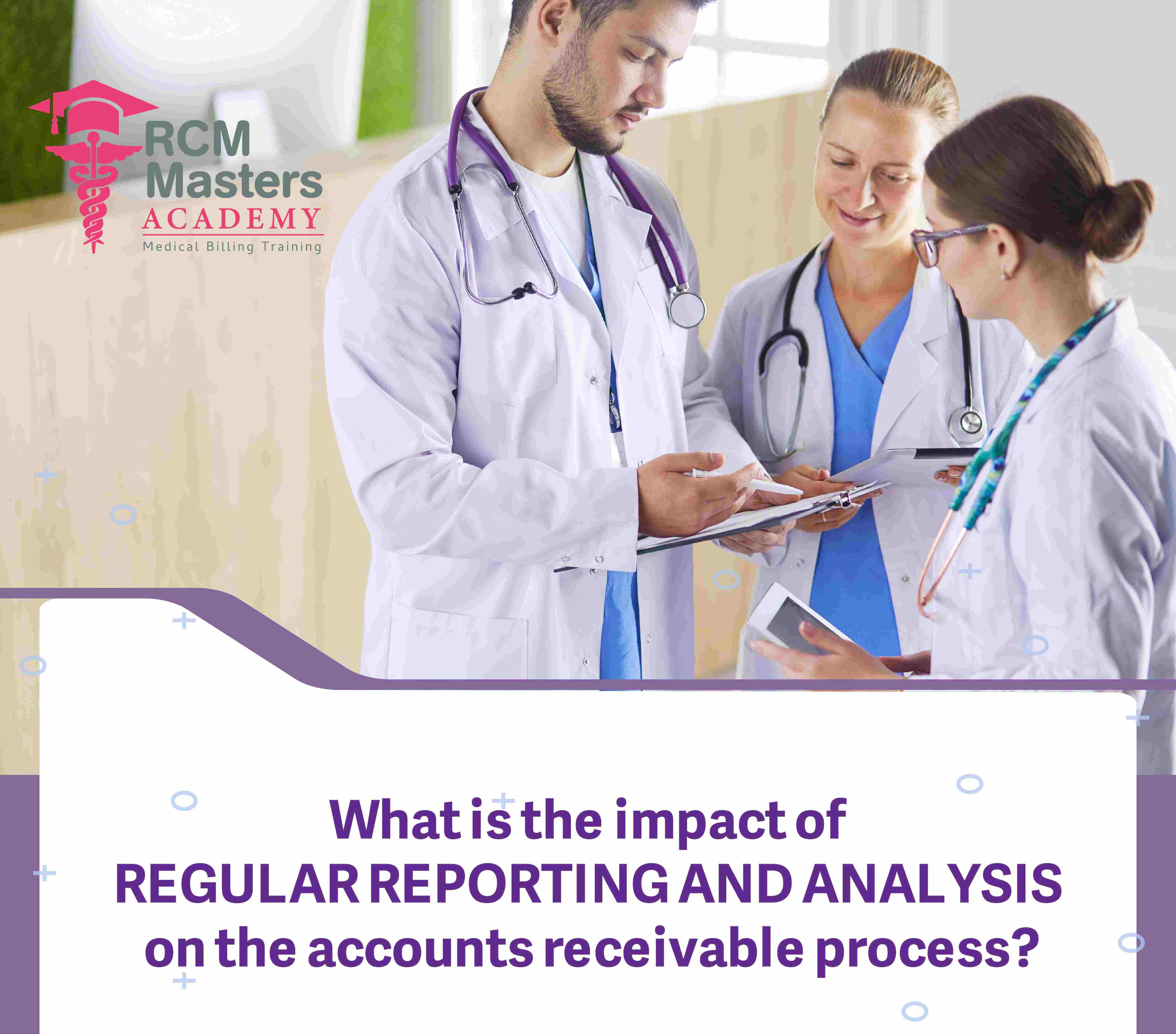 info@rcmmastersacademy.com
info@rcmmastersacademy.com

The accounts receivable process is a vital part of any organization's financial management, as it involves managing the payment collections from customers for the goods or services provided. To ensure that this process runs smoothly, regular reporting and analysis of accounts receivable can be very beneficial. We will discuss the impact of regular reporting and analysis on the accounts receivable process.
1. Improved Cash Flow Management: Regular reporting and analysis of accounts receivable can help to identify the cash flow patterns of an organization. This can help in planning and forecasting the cash flow, enabling the organization to have sufficient cash on hand to pay bills, meet payroll, and invest in growth opportunities. By analyzing accounts receivable reports, the organization can identify which customers are paying on time and which ones are not, and take corrective actions to improve payment collections.
2. Early Identification of Payment Delays: Regular reporting and analysis of accounts receivable can help to identify payment delays. By analyzing accounts receivable reports, the organization can identify which customers have overdue payments and take prompt actions to collect those payments. Early identification of payment delays can help to prevent the accumulation of overdue payments and improve the overall cash flow of the organization.
3. Improved Customer Relationships: Regular reporting and analysis of accounts receivable can help to improve customer relationships. By analyzing accounts receivable reports, the organization can identify customers who are paying on time and those who are not. This can help in building positive relationships with customers who are paying on time and in taking corrective actions to improve relationships with customers who are not.
4. Reduced Bad Debts: Regular reporting and analysis of accounts receivable can help to reduce bad debts. By analyzing accounts receivable reports, the organization can identify customers who are not paying and take prompt actions to collect those payments. This can help to prevent the accumulation of bad debts and improve the financial health of the organization.
5. Increased Efficiency: Regular reporting and analysis of accounts receivable can help to increase efficiency. By analyzing accounts receivable reports, the organization can identify which customers are paying on time and which ones are not. This can help in prioritizing payment collections and reducing the time and resources spent on chasing overdue payments.
In conclusion, regular reporting and analysis of accounts receivable can have a significant impact on the financial management of an organization. It can help to improve cash flow management, early identification of payment delays, improve customer relationships, reduce bad debts, and increase efficiency. By implementing regular reporting and analysis of accounts receivable, organizations can improve their financial health and ensure the sustainability of their operations.
You can enroll for our Online Medical Billing Training here: